Soft robots self-destruct with little trace
Korean researchers say they have devised a robot that can self-destruct and leave no trace other than an oily puddle.
Robotics
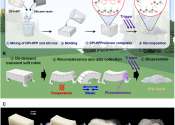
Korean researchers say they have devised a robot that can self-destruct and leave no trace other than an oily puddle.
Robotics

Someday, when quakes, fires, and floods strike, the first responders might be packs of robotic rescue dogs rushing in to help stranded souls. These battery-powered quadrupeds would use computer vision to size up obstacles ...
Oct 5, 2023
1
183
Robotics
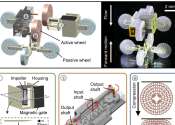
Robots have already proved to be promising tools to complete complex and demanding maintenance tasks. While engineers have developed a wide range of robots that could help to maintain and repair infrastructure, many of these ...
Robotics
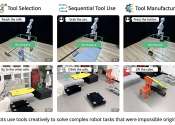
Researchers at Carnegie Mellon University and Google DeepMind recently developed RoboTool, a system that can broaden the capabilities of robots, allowing them to use tools in more creative ways. This system, introduced in ...
Robotics

Like snowflakes, no two branches are alike. They can differ in size, shape and texture; some might be wet or moss-covered or bursting with offshoots. And yet birds can land on just about any of them. This ability was of great ...
Dec 1, 2021
0
374
Hardware
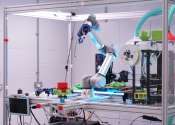
Evolutionary robotics is a sub-field of robotics aimed at developing artificial "organisms" that can improve their capabilities and body configuration in response to their surroundings, just as humans and animals evolve, ...
Robotics

Engineering researchers from North Carolina State University have demonstrated a new type of flexible, robotic grippers that are able to lift delicate egg yolks without breaking them, and that are precise enough to lift a ...
Jan 26, 2022
0
587
Robotics

Modern robots know how to sense their environment and respond to language, but what they don't know is often more important than what they do know. Teaching robots to ask for help is key to making them safer and more efficient.
Nov 29, 2023
0
46
Robotics

Researchers at Carnegie Mellon University (CMU)'s Robomechanics Lab recently introduced two new approaches that could help to improve the ability of legged robots to move on rocky or extreme terrains. These two approaches, ...
Robotics
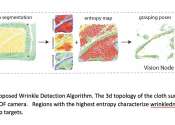
Researchers at University of Bologna and Electrolux have recently developed a new robotic system that could assist humans with one of their most common everyday chores, doing laundry. This system, introduced in a paper published ...
Robot is a virtual or mechanical artificial agent. In practice, it is usually an electro-mechanical system which, by its appearance or movements, conveys a sense that it has intent or agency of its own. The word robot can refer to both physical robots and virtual software agents, but the latter are usually referred to as bots. There is no consensus on which machines qualify as robots, but there is general agreement among experts and the public that robots tend to do some or all of the following: move around, operate a mechanical limb, sense and manipulate their environment, and exhibit intelligent behavior, especially behavior which mimics humans or other animals. In South Africa, robot is an informal and commonly used term for a set of traffic lights.
Stories of artificial helpers and companions and attempts to create them have a long history but fully autonomous machines only appeared in the 20th century. The first digitally operated and programmable robot, the Unimate, was installed in 1961 to lift hot pieces of metal from a die casting machine and stack them. Today, commercial and industrial robots are in widespread use performing jobs more cheaply or with greater accuracy and reliability than humans. They are also employed for jobs which are too dirty, dangerous or dull to be suitable for humans. Robots are widely used in manufacturing, assembly and packing, transport, earth and space exploration, surgery, weaponry, laboratory research, and mass production of consumer and industrial goods.
Modern robots are usually used in tightly controlled environments such as on assembly lines because they have difficulty responding to unexpected interference. Because of this, most humans rarely encounter robots. However, domestic robots for cleaning and maintenance are increasingly common in and around homes in developed countries, particularly in Japan. Robots can also be found in the military.
This text uses material from Wikipedia, licensed under CC BY-SA